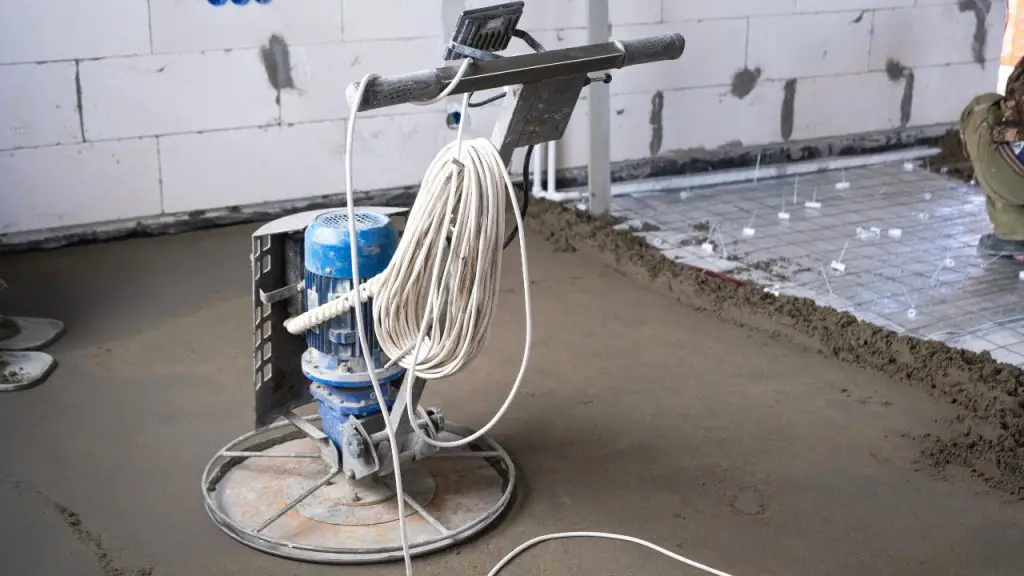Installing vinyl flooring can be an excellent choice for both residential and commercial spaces. However, ensuring the screed is adequately dry before laying vinyl is crucial to achieve a long-lasting and flawless installation. In the following sections, we will delve into the factors that influence screed drying time and explore the typical duration required for the screed to dry before installing vinyl in 2023.

Typical Drying Times for Screed
The drying time for screed can vary significantly based on the factors mentioned above. As a general guideline, traditional sand and cement screed may take around one day per millimeter of thickness to dry. For example, a 50mm thick screed could take approximately 50 days to dry fully. However, it is important to note that these are approximate estimates, and actual drying times can differ based on the specific conditions of the installation.
Allowing sufficient drying time for the screed is crucial to ensure the success of vinyl flooring installation. Failing to wait for the screed to dry adequately can lead to numerous problems, including:
Adhesive failure:
Moisture trapped in the screed can compromise the adhesive bond between the vinyl flooring and the subfloor, resulting in loose or detached tiles.
Bubbling:
If the screed is not fully dry, trapped moisture can cause bubbles to form underneath the vinyl flooring, leading to an uneven surface and a compromised aesthetic.
Warping:
Moisture can cause the vinyl flooring to warp, resulting in an unsightly and potentially hazardous condition.
Screed material calculator is the most accurate tool to know how much screed you need for your floor.
Tips for Accelerating Screed Drying
While the drying time of screed is primarily dependent on the factors mentioned earlier, there are a few tips to help accelerate the process:
| Guidelines |
|---|
| Ensure proper ventilation |
| Manage temperature and humidity |
| Follow manufacturer recommendations |
Preparing the Subfloor for Vinyl Installation
Before laying vinyl flooring, it is essential to prepare the subfloor properly. Here are some key steps:
- Ensure the subfloor is clean, dry, and free from any debris or contaminants.
- Repair any cracks or uneven areas on the subfloor.
- Apply a suitable primer or sealer to enhance adhesion between the screed and the vinyl flooring.
- Use a leveling compound, if necessary, to address any significant unevenness in the subfloor.
How to Test Screed Moisture Content?
To determine if the screed has dried sufficiently, it is recommended to conduct a moisture content test. Moisture meters or hygrometers can be used to measure the moisture levels accurately. Follow the instructions provided with the testing equipment and compare the results with the acceptable moisture content range specified by the vinyl flooring manufacturer.
Installing Vinyl Flooring on Dry Screed
Once the screed has dried to the appropriate moisture content level, you can proceed with the installation of vinyl flooring. Follow the manufacturer’s instructions for adhesive application and tile placement. Take care to ensure the vinyl is properly aligned and firmly pressed onto the screed surface for optimal adhesion.
Conclusion
In conclusion, the drying time of screed before laying vinyl is a critical aspect of the installation process. Factors such as environmental conditions, screed thickness, and the type of screed used can influence the drying time. Allowing sufficient drying time is crucial to prevent issues like adhesive failure, bubbling, and warping. By following the recommended drying guidelines and properly preparing the subfloor, you can ensure a successful and long-lasting vinyl flooring installation.
FAQs
Can I install vinyl flooring on damp screed?
No, it is not recommended to install vinyl flooring on damp or wet screed as it can lead to adhesive failure and other issues. Ensure the screed is adequately dry before proceeding with the installation.
How can I determine if the screed has dried completely?
Conduct a moisture content test using a moisture meter or hygrometer. Compare the results with the acceptable moisture content range specified by the vinyl flooring manufacturer.
Can I speed up the drying time of screed?
While the drying time of screed is primarily dependent on various factors, you can accelerate the process by ensuring proper ventilation, managing temperature and humidity levels, and following any specific recommendations provided by the screed manufacturer.
What happens if I don’t wait for the screed to dry before laying vinyl?
Failing to wait for the screed to dry adequately can lead to issues such as adhesive failure, bubbling, and warping of the vinyl flooring. It is essential to allow sufficient drying time to ensure a successful installation.
Can underfloor heating affect the drying time of screed?
Yes, underfloor heating can significantly impact the drying time of screed. It is crucial to properly commission and operate the heating system according to the manufacturer’s instructions to avoid prolonged drying times or potential damage to the screed.
